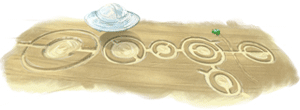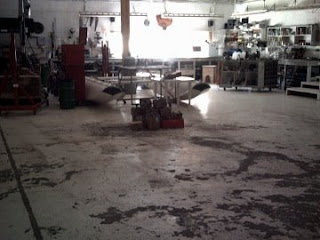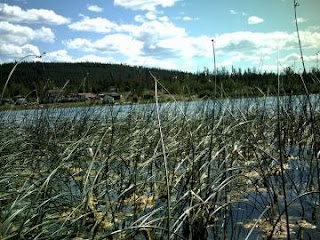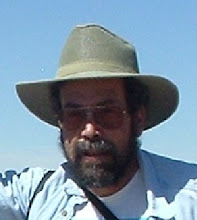
Here's why!
Happy Holidaze, Dave
 Self-professed “psychic” Sylvia Browne will appear with television personality Montel Williams at the Kiva Auditorium (Albuquerque Convention Center) on December 7th, 2009, at 7:00 PM. Ticket prices range from $59 to $119.
Self-professed “psychic” Sylvia Browne will appear with television personality Montel Williams at the Kiva Auditorium (Albuquerque Convention Center) on December 7th, 2009, at 7:00 PM. Ticket prices range from $59 to $119.

On Dec. 10th, New Mexicans for Science & Reason heard Gene Franchini (Former Chief Justice of the Supreme Court of New Mexico), on "Science and the Law." Gene started by talking a bit about a similar speech he’d given at UNM nearly forty years earlier, titled “Sex and the Law,” and related some humorous anecdotes about that trying experience. Gene then talked about polygraphs, in view of NMSR’s Dave Thomas question “Why is New Mexico the only state in the Union that still allows Polygraphs in open court?”. There’s good news and bad, Gene explained. Thirty years ago, in a case called State vs. Dorsey, lawyers for the defense had their client take a polygraph, and the polygrapher deemed him “innocent.” The court admitted it, for what it was worth. Then, in an Interlocutory Appeal, the Court of Appeals ruled that polygraphs in New Mexico can be allowed, provided they are given by a “qualified” examiner, and provided that the District Attorney can do an independent polygraph exam. It did not go to the state’s Supreme Court, even though the subject was as emotional and controversial then as now.
Then, the Legislature got into the act with new laws about polygrapher qualifications, which included being age 18, having a high school diploma, and passing an exam. Gene doesn’t know if any polygraphers have ever taken the “exam.” That’s because, since Dorsey, only two cases have seen polygraphs used, and both of these were grand jury proceedings, not trials. The law hasn’t been repealed mainly because there have not been any cases going to appeal. The good news, Gene said, is that the state legislature back then added a self-repealing provision to the law. New Mexico’s Polygraph Law will self-destruct on July 1, 2006, unless new legislation is enacted.
Gene then discussed his views on science and the law in general. In the introduction, I had pointed out one difference of science and the law. As opposed to the detailed examinations of science, jurors are supposed to take a “big picture” approach, and are not allowed to even examine transcripts of trial testimony, as this might promote too much emphasis on too few details. There’s hope, Gene said - science and the law are “closer than you think.” This is mainly due to the explosion of technological advances like DNA fingerprinting. The old pre-eminence of eyewitness testimony is losing ground to scientific evidence. But, with new tools come new potentials for abuse - is an X-ray of the contents of a sealed truck, for example, an “unreasonable search and seizure?” (In practice, X-rays might be used to establish probable cause before getting a warrant.)
But if Science and the Law are getting along better now, it certainly wasn’t like that in the past. The aim of the Law is attainment of Justice, but there is no simple formula for obtaining it. That’s why you “practice” the law - because you can never get it right, he joked. Gene talked about how James Madison appointed Thomas Jefferson’s friend, John Marshall, to the Supreme Court, and how Marshall’s now-accepted view that the Supreme Court is the final arbiter of the Constitution (a power never mentioned in the Constitution itself) scandalized Jefferson. Indeed, Jefferson never spoke to Marshall again. One of the eccentricities of our system of justice is its incredible inertia. “Nothing is quite as slow as the Law,” Gene said. In much of Europe, Code (or Civil) Law is practiced; there, the Law is based on broad principles, and the details are not all that important. Decisions are often rendered by law professors from the universities. In England and America, however, the Common Law system has evolved along a quite different path. In Common Law, it is the details - individual cases decided by judges - that establish Case Law for all. Gene likened it to a big pile of dung - you try to find a patch that’s not too smelly, and use that for piling on.
The Latin term used for “standing by that which is decided” is Stare Decisis - when courts follow precedent decisions. Really bad decisions can themselves be repealed, but the system has a huge amount of inertia, and changes but slowly. Stare Decisis is like the Killyloo Bird, Gene said - because it flies backwards, it knows where it’s been.
Gene then discussed ways to deal with bogus science in the courtroom. Sometimes judges can rule on whether certain evidence is even admissible. By and large, however, the jury has the responsibility of assigning weight and credibility to witnesses and evidence. Overall, they get it right, Gene said, but there certainly are exceptions.
Gene ended his talk on a cautionary note, advising listeners to keep an eye on nominees to the Supreme Court. There’s a difference between “innocent” and “not guilty,” and this difference is being questioned by some Court hopefuls such as Texas legislator Priscilla Owens, who argues that the burden of proof belongs to defendants, not the state.
NMSR thanks Gene Franchini for a delightful presentation.

 I ask, what good is this doing? Other than giving George Noory or Richard Hoagland a cheap thrill? Sheesh!
I ask, what good is this doing? Other than giving George Noory or Richard Hoagland a cheap thrill? Sheesh!

 Hiking to the falls, we found more splendid Batholiths up-close and personal.
Hiking to the falls, we found more splendid Batholiths up-close and personal. Pnina Miller makes the steep ascent at the upper falls.
Pnina Miller makes the steep ascent at the upper falls. The view of Hagensborg from the Falls was spectactular...
The view of Hagensborg from the Falls was spectactular... and provided a great view of (surprise!) Batholiths!
and provided a great view of (surprise!) Batholiths! Here I am, trying to get that perfect MySpace image...
Here I am, trying to get that perfect MySpace image... Pnina gets a pic for Facebook...
Pnina gets a pic for Facebook... Did I mention that the falls were spectacular?
Did I mention that the falls were spectacular? More Facebook action...
More Facebook action... Grad students Alex, Tim, Gray and Conrad also climbed up to the falls.
Grad students Alex, Tim, Gray and Conrad also climbed up to the falls. This tree near the school is the archetype for the word "Gnarly."
This tree near the school is the archetype for the word "Gnarly." Later in the evening, Galen regales team members with tales of his difficulties with an "eco-saboteur." You can find Dr. Hole's letter to this self-appointed activist, along with links to several related news stories, here. Galen had to risk life and limb in order to repair the damage and make the shot happen - the only safe way to dispose of the explosives once they'd been set in the hole. In the end, even the sandhill cranes claimed to be in danger turned out to have left the island a month before.
Later in the evening, Galen regales team members with tales of his difficulties with an "eco-saboteur." You can find Dr. Hole's letter to this self-appointed activist, along with links to several related news stories, here. Galen had to risk life and limb in order to repair the damage and make the shot happen - the only safe way to dispose of the explosives once they'd been set in the hole. In the end, even the sandhill cranes claimed to be in danger turned out to have left the island a month before. The nightly meeting - all hands.
The nightly meeting - all hands. At 11 PM, several team members prepare to "feel" one of the seismic detonations. We definitely felt this one, at a distance of only a hundred or so meters. At greater distances, the rumbles are quite difficult to detect with the senses.
At 11 PM, several team members prepare to "feel" one of the seismic detonations. We definitely felt this one, at a distance of only a hundred or so meters. At greater distances, the rumbles are quite difficult to detect with the senses. Now that the shots are done, it's time to gather the instruments and collect some Data. Here is grad student Tim collecting a Texan/geophone station.
Now that the shots are done, it's time to gather the instruments and collect some Data. Here is grad student Tim collecting a Texan/geophone station. Some stations require three Texans for vertical, N/S, and E/W directions of motion. Others are vertical only.
Some stations require three Texans for vertical, N/S, and E/W directions of motion. Others are vertical only. Here I am, collecting stations. Pick-ax? Check. Safety vest? Check. Rain hat? Check. Compass? Check. GPS? Check. Clipboard and pen? Check.
Here I am, collecting stations. Pick-ax? Check. Safety vest? Check. Rain hat? Check. Compass? Check. GPS? Check. Clipboard and pen? Check. At last, some rain. It's usually much rainier than was the case for our deployment.
At last, some rain. It's usually much rainier than was the case for our deployment. Ron Clowes of UBC shows that even Principal Investigators (PI's) get their hands dirty on a project like this.
Ron Clowes of UBC shows that even Principal Investigators (PI's) get their hands dirty on a project like this. With the instruments back at the hangar, it's finally time to get some DATA. We batch process 45 Texan digitizers at a time.
With the instruments back at the hangar, it's finally time to get some DATA. We batch process 45 Texan digitizers at a time. Pnina scans returning digitizers into the computer. Every digitizer has a unique serial number, which is required to connect its data to the actual location for the station.
Pnina scans returning digitizers into the computer. Every digitizer has a unique serial number, which is required to connect its data to the actual location for the station. This is what it's all about - seismic data. These squiggles will eventually reveal what lies hidden beneath the Coast Mountains.
This is what it's all about - seismic data. These squiggles will eventually reveal what lies hidden beneath the Coast Mountains. On our way to drop off the hikers to pick up their stations, we stop at Grandma's in Anahim Lake for some gas and strong coffee.
On our way to drop off the hikers to pick up their stations, we stop at Grandma's in Anahim Lake for some gas and strong coffee. The team awaits the arrival of local guide Archie.
The team awaits the arrival of local guide Archie. Again with the mandatory mosquito spray.
Again with the mandatory mosquito spray. Erin and Shelbie get last minute instructions from Prof. Hole.
Erin and Shelbie get last minute instructions from Prof. Hole. The hikers leave. We'll find them several kilometers down the way.
The hikers leave. We'll find them several kilometers down the way. On our way to the pickup point, we found several of the teams from the other field center at Puntzi Lake. Here, 'Panda' dresses to prevent mosquito bites.
On our way to the pickup point, we found several of the teams from the other field center at Puntzi Lake. Here, 'Panda' dresses to prevent mosquito bites. Dr. Hole with team members Tiffany and Ari, from the Puntzi Lake center.
Dr. Hole with team members Tiffany and Ari, from the Puntzi Lake center. One of several heavy-duty vans used to retrieve the thousands of sensors and digitizers.
One of several heavy-duty vans used to retrieve the thousands of sensors and digitizers. The mosquitoes are really big in British Columbia.
The mosquitoes are really big in British Columbia. Evidence of recent glaciation is everywhere.
Evidence of recent glaciation is everywhere. Near the pickup point, "The Slide" is a massive scree pile.
Near the pickup point, "The Slide" is a massive scree pile. 6 PM: the hikers, backpacks full of Texans and geophones, make their triumphant return.
6 PM: the hikers, backpacks full of Texans and geophones, make their triumphant return. The lodge we stayed at, the Coast Mountain Lodge, is run by Holly and Fraser. They have a few bikes for guests to use, and I was able to get a little riding in every day.
The lodge we stayed at, the Coast Mountain Lodge, is run by Holly and Fraser. They have a few bikes for guests to use, and I was able to get a little riding in every day. Work beckons, so off I ride to the hangar...
Work beckons, so off I ride to the hangar...  ... where the amphibious plane has returned with some of the boat team deployers.
... where the amphibious plane has returned with some of the boat team deployers. With every instrument returned, the data must be downloaded, and then the batteries removed. Time for some grad student help!
With every instrument returned, the data must be downloaded, and then the batteries removed. Time for some grad student help! The After Party is this evening. Time to use our car to round up some equipment, like a guitar, and a digital projector, which we obtained at the fishery. This stunning batholith is across the street from the fishery. There are dozens of them all up and down the Bella Coola valley.
The After Party is this evening. Time to use our car to round up some equipment, like a guitar, and a digital projector, which we obtained at the fishery. This stunning batholith is across the street from the fishery. There are dozens of them all up and down the Bella Coola valley. Back at the hangar, the grad students are making headway on the de-batterizing...
Back at the hangar, the grad students are making headway on the de-batterizing... Meanwhile, outside the hangar, Phil washes off some filthy dirty geophones.
Meanwhile, outside the hangar, Phil washes off some filthy dirty geophones. There is a large bear trap just up the road from the hangar.
There is a large bear trap just up the road from the hangar. The After Party at last. Holly and friends grilled some fresh salmon, and I rolled out a brand new parody song, "Ba Ba Ba, Ba Batholiths" (sung to the tune of the Beach Boys' "Ba Ba Ba, Ba Barbara Anne")
The After Party at last. Holly and friends grilled some fresh salmon, and I rolled out a brand new parody song, "Ba Ba Ba, Ba Batholiths" (sung to the tune of the Beach Boys' "Ba Ba Ba, Ba Barbara Anne") Our last day in Hagensborg starts with another all hands meeting.
Our last day in Hagensborg starts with another all hands meeting. Time to gather up everything. It all must be returned to Socorro, NM.
Time to gather up everything. It all must be returned to Socorro, NM. Every attempt was made to retrieve all the human artifacts used for the seismic stations. Here are the survey stakes.
Every attempt was made to retrieve all the human artifacts used for the seismic stations. Here are the survey stakes. Packing the van for the 5-hour trip up the Hill to Puntzi Lake, and the shipping trailer.
Packing the van for the 5-hour trip up the Hill to Puntzi Lake, and the shipping trailer. The requisite Group Photo. Timers at the ready!
The requisite Group Photo. Timers at the ready! We say goodbye to an empty hangar, now an ex-field center.
We say goodbye to an empty hangar, now an ex-field center. One last run to Bella Coola and the harbor.
One last run to Bella Coola and the harbor. These splendid falls were just a few meters from the BC Hydro station in Bella Coola.
These splendid falls were just a few meters from the BC Hydro station in Bella Coola. Half of the PASSCAL team: Bob, Pnina and I at the falls.
Half of the PASSCAL team: Bob, Pnina and I at the falls. Did I mention that the Coast Mountains are strikingly beautiful?
Did I mention that the Coast Mountains are strikingly beautiful? Atop the Hill, we head into mosquito country. Here I am at Nimpo Lake, where I joined the Swat Team there.
Atop the Hill, we head into mosquito country. Here I am at Nimpo Lake, where I joined the Swat Team there. Hours later, we arrive at Puntzi Lake. Here, a few of the grad students cool off in the lake, near Barney's lakeside resort.
Hours later, we arrive at Puntzi Lake. Here, a few of the grad students cool off in the lake, near Barney's lakeside resort. That evening, University of Victoria PI George Spence leads the all hands meeting at Howdy's Lodge.
That evening, University of Victoria PI George Spence leads the all hands meeting at Howdy's Lodge. For some, the day begins with Breakfast at Barney's.
For some, the day begins with Breakfast at Barney's. Time to organize the many gigabytes of data collected. Here, the raw data sits in the trunk of our car.
Time to organize the many gigabytes of data collected. Here, the raw data sits in the trunk of our car. At the Puntzi Lake field center, the crates are unloaded from the vans, and organized for the big trailer.
At the Puntzi Lake field center, the crates are unloaded from the vans, and organized for the big trailer. PIs George Spence and Ron Clowes monitor the loading.
PIs George Spence and Ron Clowes monitor the loading. Michelle shows how it's done.
Michelle shows how it's done. A trailer-eye's view of the unloading.
A trailer-eye's view of the unloading. One Texan was lost, and mysteriously turned up at its location again. Here, we download the last of thousands of such instruments.
One Texan was lost, and mysteriously turned up at its location again. Here, we download the last of thousands of such instruments. This is the commemorative card signed by team members.
This is the commemorative card signed by team members. The owners of Barney's let us take out some kayaks and canoes. Here is my kayak.
The owners of Barney's let us take out some kayaks and canoes. Here is my kayak. This "island" is just some reeds in the water.
This "island" is just some reeds in the water. The area is dotted with many unique home-made fence designs.
The area is dotted with many unique home-made fence designs. In the lodge, I discover that "Aie Caramba" is French for "Ay Caramba."
In the lodge, I discover that "Aie Caramba" is French for "Ay Caramba." With the PIs tucked away analyzing the data, the grad students come out to play.
With the PIs tucked away analyzing the data, the grad students come out to play. It's hard to reconcile dozens of scribbled sheets with reams of serial numbers and station IDs...
It's hard to reconcile dozens of scribbled sheets with reams of serial numbers and station IDs... Evening is time for a couple of pale ales and some live music. Here, Amorita of UTEP strums some Dave Matthews licks on the guitar.
Evening is time for a couple of pale ales and some live music. Here, Amorita of UTEP strums some Dave Matthews licks on the guitar. Finally, a summer sunset comes to the north country.
Finally, a summer sunset comes to the north country. The last all hands meeting: PI Steve Harder at right.
The last all hands meeting: PI Steve Harder at right. The trailer is loaded - so it's time to start the many hours of driving back to Vancouver. The old Gold Rush houses are still named for the number of miles they are from Lillooet, B.C.
The trailer is loaded - so it's time to start the many hours of driving back to Vancouver. The old Gold Rush houses are still named for the number of miles they are from Lillooet, B.C. More Canadian Rockies action enroute to Vancouver.
More Canadian Rockies action enroute to Vancouver. In Vancouver, bikes are everywhere.
In Vancouver, bikes are everywhere. Vancouver Corner in downtown.
Vancouver Corner in downtown. Beaches line much of the UBC Campus. Time for a relaxing sunset.
Beaches line much of the UBC Campus. Time for a relaxing sunset. At UBC, a cab waits to take Shelbie to the airport for her return to Virginia Tech.
At UBC, a cab waits to take Shelbie to the airport for her return to Virginia Tech. On the way to to take colleague Willie to the airport, we check out another beach near UBC.
On the way to to take colleague Willie to the airport, we check out another beach near UBC. A bald eagle graces the beach.
A bald eagle graces the beach. Here I am on the beach with Michael and Willie. The ships behind us are huge.
Here I am on the beach with Michael and Willie. The ships behind us are huge. At the airport, we espy the as-yet-unlit welcoming sign for the 2010 Winter Olympics in Vancouver.
At the airport, we espy the as-yet-unlit welcoming sign for the 2010 Winter Olympics in Vancouver. Back at UBC, we find more team members on their ways home. Here, Tina, Gaelle, Erin, and Tim pose for the camera.
Back at UBC, we find more team members on their ways home. Here, Tina, Gaelle, Erin, and Tim pose for the camera. At the Student Union building, we found Goddess of Democracy statue, dedicated in 1991. It marks the Tianenmen Square killings during student protests in June of 1989 in China. The caption reads "
At the Student Union building, we found Goddess of Democracy statue, dedicated in 1991. It marks the Tianenmen Square killings during student protests in June of 1989 in China. The caption reads ""DURING 1989, MILLIONS OF STUDENTS AND
CIVILIANS IN MAJOR CITIES OF CHINA
DEMONSTRATED PEACEFULLY FOR FREEDOM AND
DEMOCRACY. ON JUNE 4, 1989, THE MOVEMENT
WAS CRUSHED BY THE GOVERNMENT. MANY
DIED. THIS EVENT HAD ENORMOUS IMPACT ON
SUBSEQUENT DEMOCRACY MOVEMENTS AROUND
THE WORLD.
ERECTED IN MEMORY OF THOSE WHO DIED ... JUNE 4, 1991"
 On the other side of the SUB, we found the Bike Shop. Here's a model of a bicycle built for seven!
On the other side of the SUB, we found the Bike Shop. Here's a model of a bicycle built for seven!  With bicycles rented, Michael and I head downtown. Barriers prevent cars from using streets marked as bike routes as through streets.
With bicycles rented, Michael and I head downtown. Barriers prevent cars from using streets marked as bike routes as through streets. While we were taking data up north, a bike lane was installed in the Burrard Bridge. Mike and I try it out on our way to Stanley Island Park.
While we were taking data up north, a bike lane was installed in the Burrard Bridge. Mike and I try it out on our way to Stanley Island Park. Having walked across the bridge weeks earlier, when pedestrians and bikes shared a sidewalk, I find the new arrangement much safer for both riders and walkers.
Having walked across the bridge weeks earlier, when pedestrians and bikes shared a sidewalk, I find the new arrangement much safer for both riders and walkers. Most of Stanley Park is off-limits to cars. Bikes and pedestrians are everywhere. Here is a blue heron at the park's Lost Lagoon.
Most of Stanley Park is off-limits to cars. Bikes and pedestrians are everywhere. Here is a blue heron at the park's Lost Lagoon. An informative poster notes that "Behaviour is adaptive." Shades of unbridled evolution!
An informative poster notes that "Behaviour is adaptive." Shades of unbridled evolution! Michael Johnson poses on front of the Stanley Park totem poles. These are copies of totems seized by Christian groups trying to suppress expressions of First Nations religious practices in the 19th century.
Michael Johnson poses on front of the Stanley Park totem poles. These are copies of totems seized by Christian groups trying to suppress expressions of First Nations religious practices in the 19th century. One of many statues lining the Park.
One of many statues lining the Park. Part of the seawall, at low tide.
Part of the seawall, at low tide. At English Bay, we find a statue of Inukshuk; this is the icon for the 2010 Olympics. An Inukshuk is a pile of rocks intended to act for or represent a person.
At English Bay, we find a statue of Inukshuk; this is the icon for the 2010 Olympics. An Inukshuk is a pile of rocks intended to act for or represent a person. On the way back to UBC, we enjoy the city's numerous bike lanes.
On the way back to UBC, we enjoy the city's numerous bike lanes. After returning the rented bikes, we washed and gassed the car, and returned it too.
After returning the rented bikes, we washed and gassed the car, and returned it too. After dozens of kilometers on the bikes, we opted for a bus ride from the rental car location back to the university.
After dozens of kilometers on the bikes, we opted for a bus ride from the rental car location back to the university. Finally, it's our turn to get back home. Mike and I wait for our taxi at the UBC dorm.
Finally, it's our turn to get back home. Mike and I wait for our taxi at the UBC dorm. At the airport, we fill out our customs cards.
At the airport, we fill out our customs cards. One last bear confrontation.
One last bear confrontation. Next stop, Phoenix. And then Albuquerque!
Next stop, Phoenix. And then Albuquerque! A last look at the Pacific before heading back to the desert.
A last look at the Pacific before heading back to the desert. Back in Albuquerque, the familiar batholiths of the Sandias beckon. Having met their juvenile cousins in Bella Coola, I appreciate their great age all the more.
Back in Albuquerque, the familiar batholiths of the Sandias beckon. Having met their juvenile cousins in Bella Coola, I appreciate their great age all the more. Galen on the boat.
Galen on the boat. Seals in the harbour.
Seals in the harbour. A bear up close!
A bear up close! Orcas in the bay.
Orcas in the bay. A foxy fox!
A foxy fox! Galen, Audrey and Erin find more falls.
Galen, Audrey and Erin find more falls. Erin and Phil pass judgment on project saboteurs.
Erin and Phil pass judgment on project saboteurs. While Mike, George and Willie spent most of their time at the Puntzi Lake field center, they came over in George's small plane to check out the Bella Coola center.
While Mike, George and Willie spent most of their time at the Puntzi Lake field center, they came over in George's small plane to check out the Bella Coola center. The incredibly beautiful Hunlen Falls of Tweedsmuir Park were too remote for us to take off several days to hike there, but George's plane was able to fly right over it.
The incredibly beautiful Hunlen Falls of Tweedsmuir Park were too remote for us to take off several days to hike there, but George's plane was able to fly right over it. Several sensors were deployed on cliff sides accessible only by boat. Here, Audrey and Todd get another station set up.
Several sensors were deployed on cliff sides accessible only by boat. Here, Audrey and Todd get another station set up.  Phil took this photo of the cargo vans driving down the Hill at Heckman Pass, the road so infamous it has its own poem:
Phil took this photo of the cargo vans driving down the Hill at Heckman Pass, the road so infamous it has its own poem: Never mind Facebook. This stunning photo belongs in Life Magazine!
Never mind Facebook. This stunning photo belongs in Life Magazine!